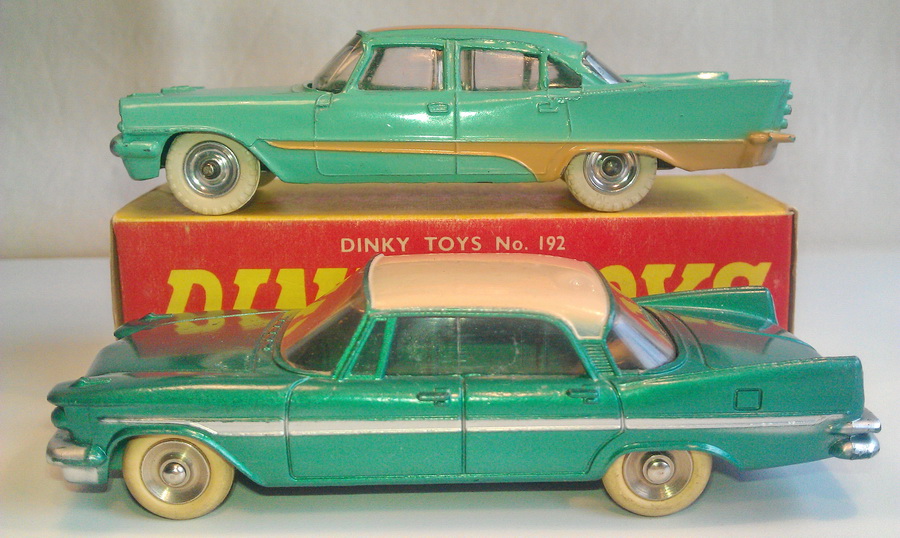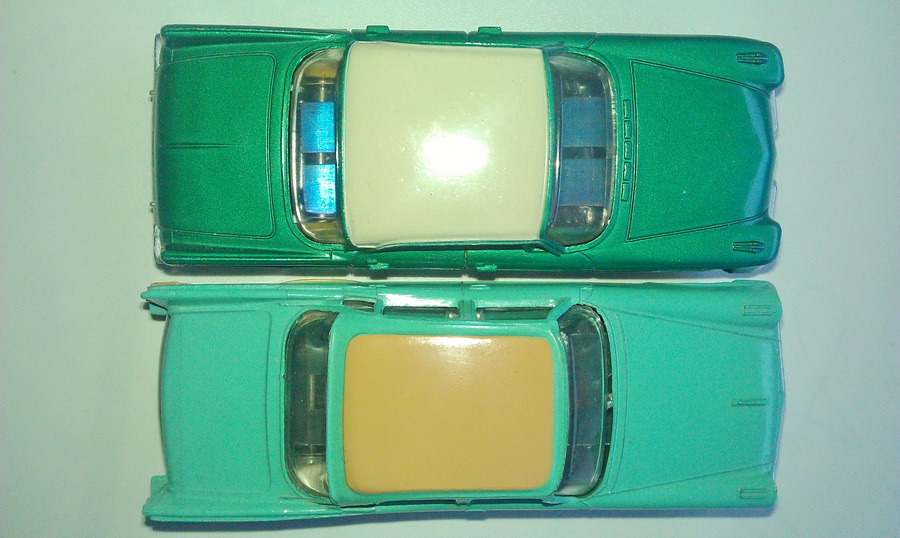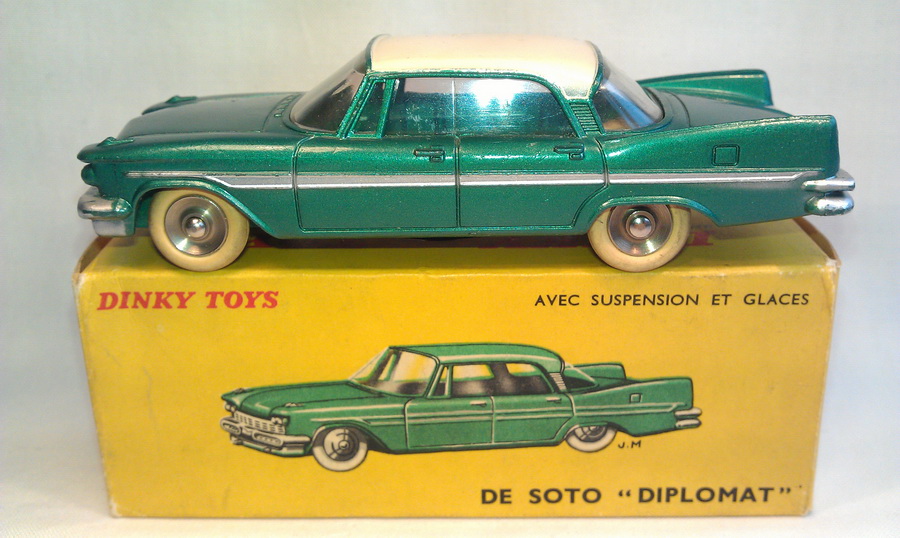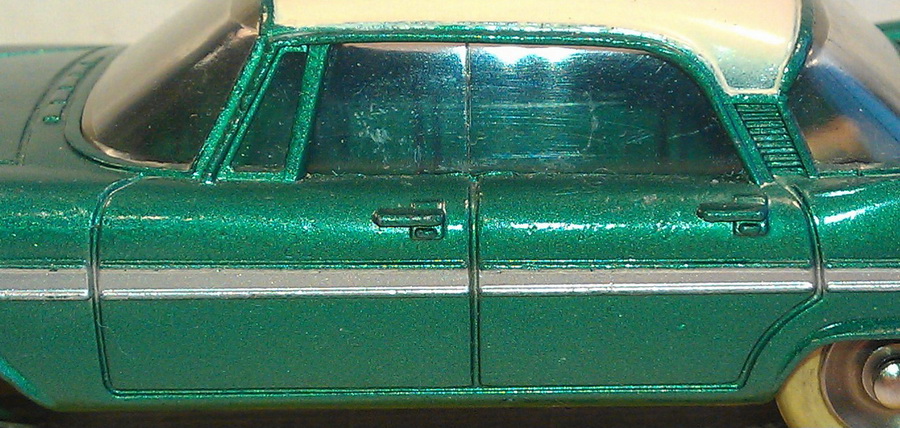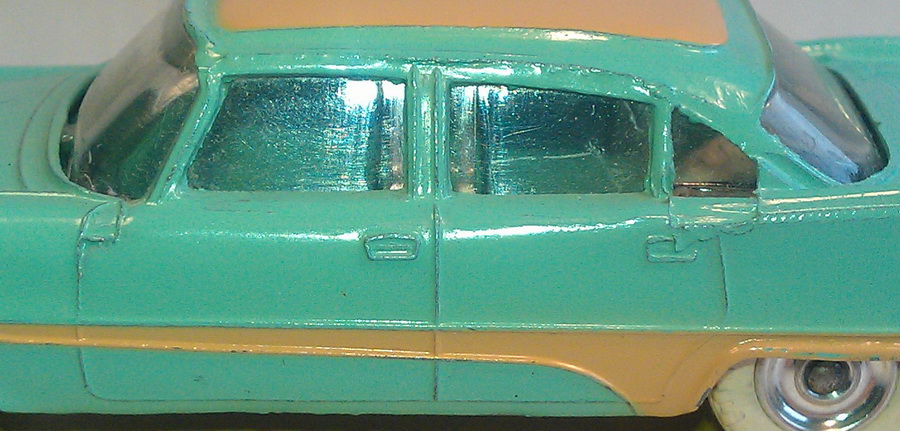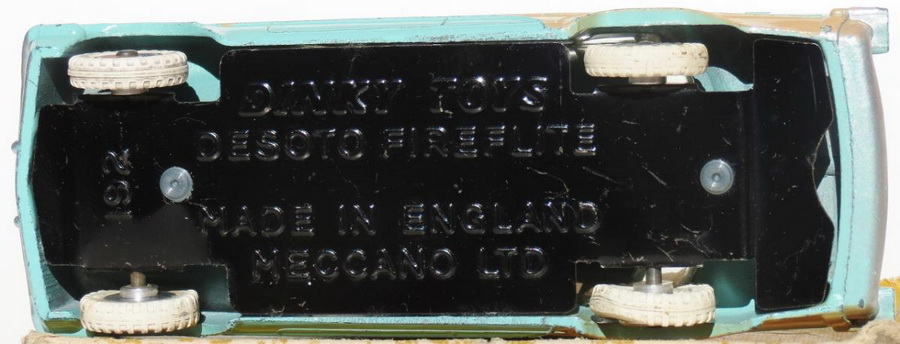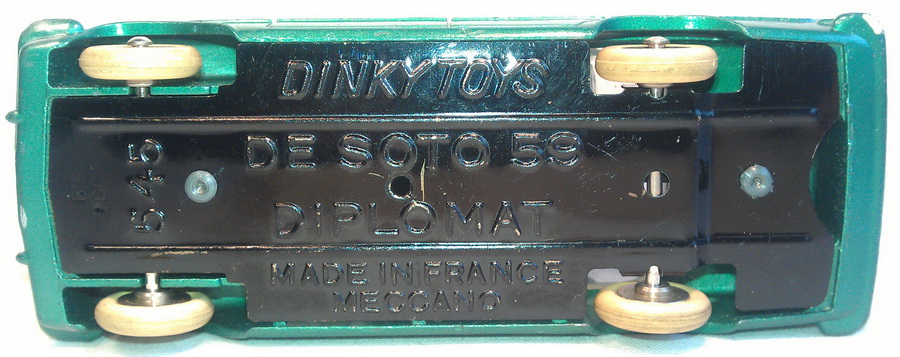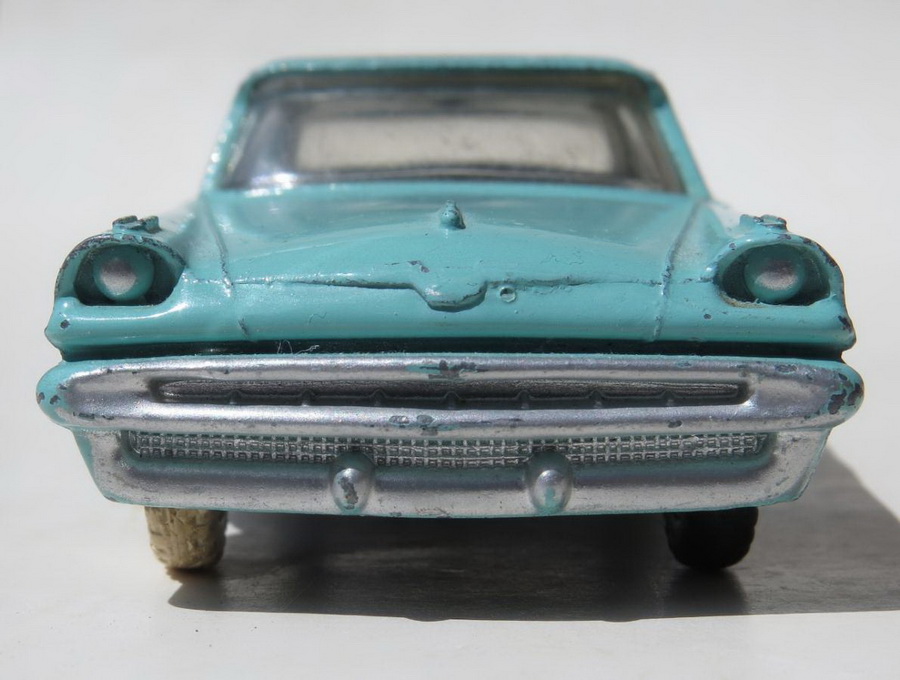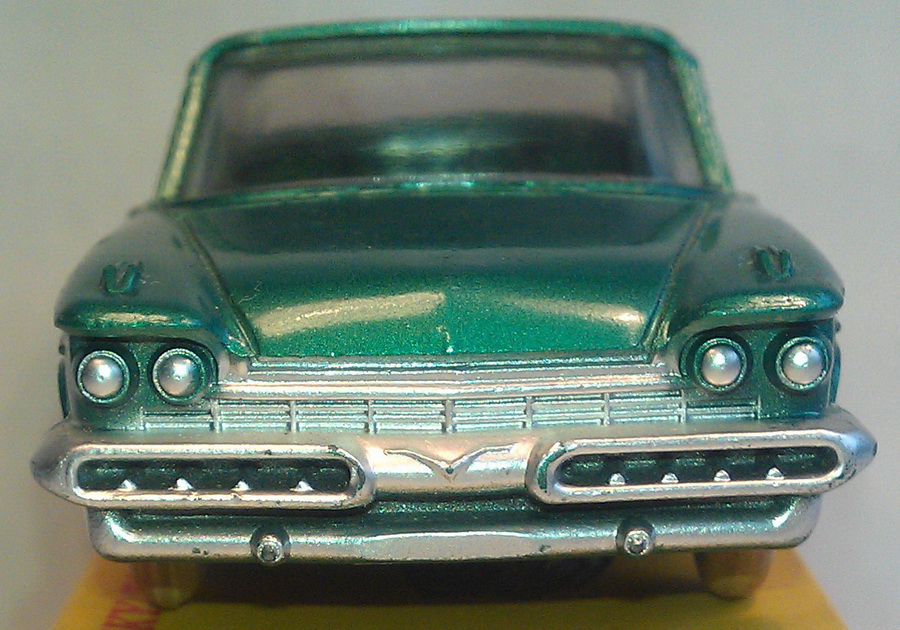- Thank you received: 0
Dinky Toys manufacturing.
3 years 6 months ago #23658
by MUMBY655
Replied by MUMBY655 on topic Dinky Toys manufacturing.
Hello Jan, I can offer no logical explanation as to the light weight of the Jaguar other than it's general wall thickness was reduced as an experiment. Certainly in the late 1970's general wall thickness was officially reduced from 1mm to 0.8mm a saving of 20%; without any appreciable loss in strength. If you have an Austin Princess DT 123, it is also very light with 0.8mm wall thickness. Obviously you cannot have 0.8mm everywhere because creating the natural contours of a model produces thicker areas. Following these contours internally at 0.8mm would require undercuts. Creating undercuts makes tooling extremely difficult and more expensive. Binns Road never released production models in resin. Kind regards Vic
Please Log in or Create an account to join the conversation.
- dinkycollect
-
 Topic Author
Topic Author
- Offline
- User
-

Less
More
- Thank you received: 0
3 years 6 months ago #23659
by dinkycollect
Replied by dinkycollect on topic Dinky Toys manufacturing.
The Mercedes 220 SE ref. 186 is also a light weight model like the Jaguar
Please Log in or Create an account to join the conversation.
- Jan Oldenhuis
-

- Offline
- User
-

Less
More
- Thank you received: 0
3 years 6 months ago #23660
by Jan Oldenhuis
Replied by Jan Oldenhuis on topic Dinky Toys manufacturing.
Hello Vic. Thank you very much for your much appreciated and valuable explanation. We are fortunate to hear a representative of the Meccano factory Liverpool after so many years.Sincerely, Jan Oldenhuis.
Please Log in or Create an account to join the conversation.
- Jan Oldenhuis
-

- Offline
- User
-

Less
More
- Thank you received: 0
3 years 5 months ago #23665
by Jan Oldenhuis
Replied by Jan Oldenhuis on topic Dinky Toys manufacturing.
Interesting manufacturing comparison between UK 192 De Soto Fireflite and French 545 De Soto Diplomat: Each model has its own production details. It only becomes fun for a collector if he knows all these details and can make comparisons with similar models and can explain the differences. I enjoy comparing models and explaining the differences and putting them on paper. It increases my knowledge and pleasure to look at it that way and to share my findings with other collectors and to be open to additions or corrections. Dinky Toys manufacturing is not my specialty but it has my great interest and I follow contributions about that with interest because I find the production method of a model interesting to know. By reading contributions in the forum and participating in it yourself, I learn about it and can find interesting comparisons of models. Difference in doorlines: For example, I find UK model 192 De Soto Fireflite interesting to compare with French model 545 De Soto Diplomat. It should be noted that model 192 was produced in December 1958 and model 545 only a year later in December 1959. Meccano Bobigny used the erosion spark technique with model 545, which Meccano Liverpool could not yet do in 1958. As a result, you can clearly see the external differences in doorlines. 192 clearly has raised lines as opposed to deepened lines of the 545. Still, I like to show this comparison, because both models are of the same USA brand name car manufacturer De Soto, but model 192 were manufactured by Meccano Liverpool and model 545 by Meccano Bobigny.
Below - 545 with deepened lines; above - 192 with raised lines. Difference in roof painting: It is also interesting to compare the way of painting the roof of both models. It is immediately noticeable that the roof of the 192 is painted with a generous free space all around up to the windows and is applied on a raised platform, while the roof of the 545 is completely flat and painted up to the windows.
Below - 192 with raised painted roof with space around till windows party. Above - 545 with flat painted roof till windows party. This raised way of painting the roof of the 192 is mysterious and described by Bruce Hoy in topic 192. Why was the paint of the roof applied to a raised platform, while the real 1957 De Soto Fireflite was never executed that way? The application of spun wheels: In December 1958, the Model 192 was the first UK model to be fitted with spun hubs, but not yet with 4 wheel suspension. That only came on 18-3-1960. Model 545 was the 1st French model that was equipped with 4 wheel suspension. Before that, it had to be done with spun hubs instead of ridged hubs, as drawn by Jean Massee on the 545 box. Due to the bulging outwards of the ridged hubs, there was not enough room for the suspension for the model and had to be changed to a flat wheel hub.
Ridged hubs on box 545, drawn by Jean Massee, but never performed. It got spun hubs needed for 4 wheel suspension. Difference in window styles: 545 is executed without window styles. They are incorporated in the plastic windows. 192 is executed with door window styles as pictured below.
545 without door window styles. They are incorporated in the plastic windows.
192 with door window styles. Difference in baseplate:
Dinky Toys 192 De Soto Fireflite Sedan base Bruce Hoy DTCA with number 192, without 4 wheel suspension and without model year.
Dinky Toys 545 De Soto Diplomat with number 545, with 4 wheel suspension and one of the few Dinky Toys with the model year entry 59 in the base. Striking is the absence on the base plate of the patent number for the 4 wheel suspension! Difference in headlamps: 192 had single headlamps - 545 had dual headlamps.
192 with single headlamps as explained by Bruce Hoy in topic 192.
545 with dual headlamps. So you see that there are many interesting differences to find between certain models. It is very fun and educational to discover that and to explain. Jan Oldenhuis, 20 April 2022.
Please Log in or Create an account to join the conversation.
3 years 5 months ago #23666
by MUMBY655
Replied by MUMBY655 on topic Dinky Toys manufacturing.
Hello Jan, I don't think there are any mysteries here. The two models are of two completely different cars produced by De-Soto. One explanation for the raised painted roof panel on the FireFlite is the option of a fold back sun roof which could not extend to the extreme edges of the roof because structural integrity would have to be maintained. Vic Mumby 20 April 2022
Please Log in or Create an account to join the conversation.
- Jan Oldenhuis
-

- Offline
- User
-

Less
More
- Thank you received: 0
3 years 5 months ago #23667
by Jan Oldenhuis
Replied by Jan Oldenhuis on topic Dinky Toys manufacturing.
Thank you Vic for your valued response. The question about the method of painting the roof of the 192 has clearly been solved by you. Thank you for that. My intention was only to highlight the optical differences of these 2 different De Soto models and to name the individual details of the models. Because the 192 was made by Meccano Liverpool and the 545 by Meccano Bobigny, I thought it would be interesting to compare them optically, knowing that they are different models and were also made with a gap of a year. I always try to mention some interesting details with a contribution on the forum. Jan Oldenhuis, 21 April 2022
Please Log in or Create an account to join the conversation.
- johnnyangel
-

- Offline
- User
-

Less
More
- Posts: 1
- Thank you received: 0
3 years 5 months ago #23668
by johnnyangel
Replied by johnnyangel on topic Dinky Toys manufacturing.
I think Vic may be right when he says that the painted portion of the 192's roof is meant to simulate a folding cloth sunroof. It was an odd choice for the model, however, since that certainly was not a very common option on American cars of the time. Regarding what Jan has termed 'window styles,' the explanation there of course is that the 192 is a model of a standard sedan with framed windows. The 545 is a model of a 'hardtop,' which is a sedan that has frameless windows and no 'B' pillar. When all the glass is rolled down, the window area is totally open, as it would be on a convertible. Hardtops were always more expensive and the frameless glass tended to rattle, and they have become a rarity. Another example of a hardtop Dinky is the 147 Cadillac 62. (It was doubly inappropriate that Dinky later turned this model into a police car, since police departments would never have chosen an expensive Cadillac, and supposing they did, they would surely have selected the less-expensive standard sedan, not the extra-costly hardtop.) See
LINK
for more information on American hardtops.
Please Log in or Create an account to join the conversation.
3 years 5 months ago #23669
by dinkyfan
Replied by dinkyfan on topic Dinky Toys manufacturing.
Jon--Good points and well explained. Am not sure if it was discussed earlier, but another interesting comment about the DeSoto Diplomate is that it was an export only model made by the Chrysler Corp., and was really a Plymouth body that had a DeSoto front end grafted on to it. But the comparison was interesting and also shows the differences between how Bobginey made models and Binn's Rd. There were always differences in how the two companies detailed and painted their models too.Best regards, Terry
Please Log in or Create an account to join the conversation.
Time to create page: 0.550 seconds

